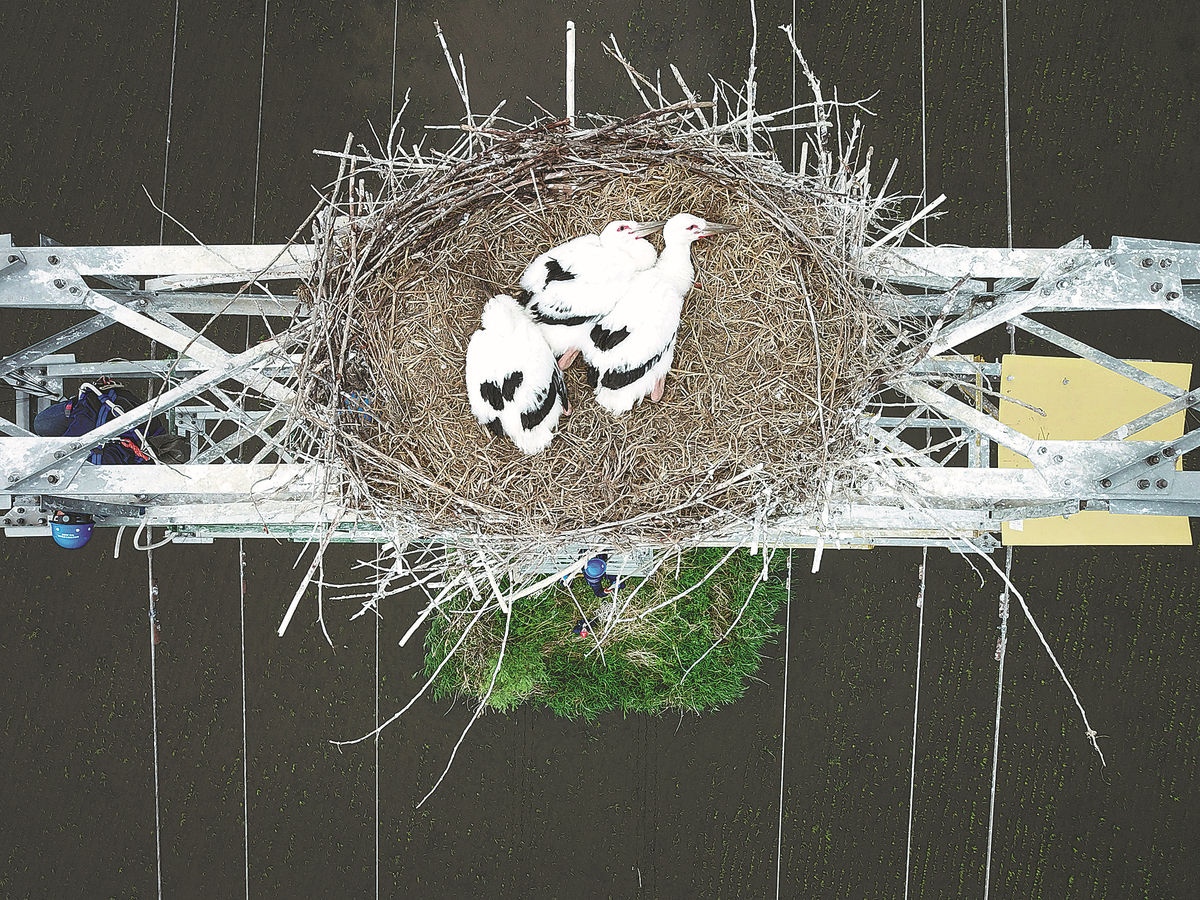State Grid saves storks from danger posed by power lines


Thanks to its vast wetland area, Qiqihar is a paradise for migratory birds. Its Zhalong Wetland Nature Reserve provides a habitat for more than 190 types of rare birds, including red-crowned cranes.
Every year from mid-March, a large number of migratory birds fly in to build nests and raise their young.
The oriental white stork, an endangered migratory species under first-class national protection, is mainly found in the far east of Russia and in Northeast China.
As solitary birds, they like to build nests on isolated trees. Although the wetland in Qiqihar is rich in water and grass, tall trees are rare, so the pylons in the wetland are now the first choice for the storks to settle down.
"The returning oriental white storks were spotted near transmission lines for the first time on March 12, and on March 20 some of them chose the power towers as their homes," Wang Zhimin, an electrician from the company, said.
This year, Qiqihar's power towers attracted more than 50 pairs of the birds to build nests, bringing the total number of such nests to more than 110, with each registered with a serial number by company workers.
In a wider context, State Grid Heilongjiang Electric Power Co has launched a campaign in the province to offer better protection for the birds.
























